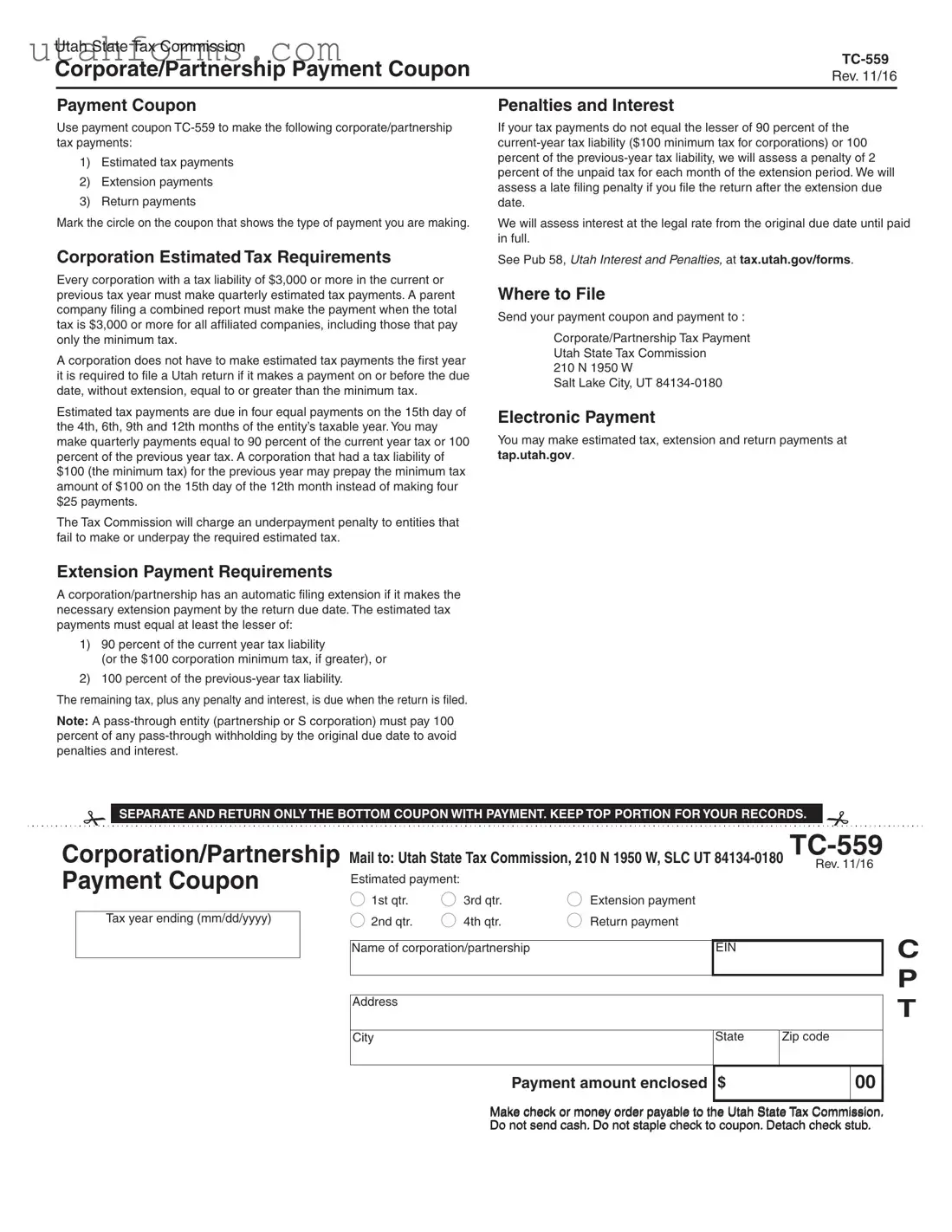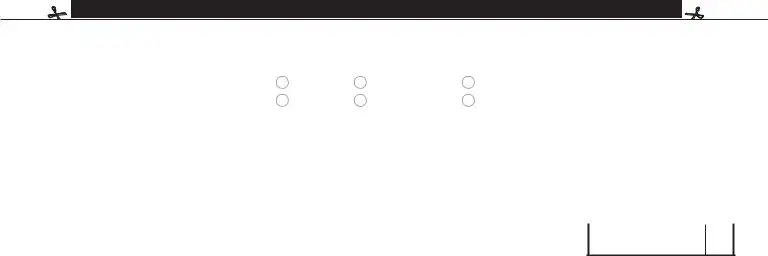The IRS Form 1040-ES, "Estimated Tax for Individuals," shares similarities with the Utah TC-559 form as it is also designed for the payment of estimated taxes. While the IRS form is for individuals, both forms serve a similar purpose: allowing filers to make payments towards their expected tax liability for the year. These payments help avoid underpayment penalties by ensuring taxpayers pay as they earn or receive income throughout the year. The structure of quarterly payments is a common feature, aiming to spread the tax burden evenly across the year.
Form 7004, "Application for Automatic Extension of Time To File Certain Business Income Tax, Information, and Other Returns," mirrors the Utah TC-559 form in providing an avenue for businesses to request an extension for filing tax returns. Both forms do not extend the time for payment of taxes due but focus on granting more time to file the necessary documentation. This pivotal feature underlines the importance of meeting payment deadlines to avoid penalties, even when additional time for filing has been granted.
The California Form 3522, "LLC Tax Voucher," is another document that resembles the Utah TC-559 form as it pertains to a specific entity, in this case, limited liability companies (LLCs), making tax payments. Similar to the TC-559, it is a payment coupon used for submitting annual tax payments, emphasizing the parallel process of entities across different jurisdictions making regular tax payments to comply with state laws and avoid penalties for late or insufficient payments.
The Form 1065, "U.S. Return of Partnership Income," though primarily a return filing document, shares a connection with the TC-559 through its extension and estimated tax payment components for partnerships. Both documents facilitate partnerships in managing their tax obligations, specifically in relation to paying taxes due in a timely manner and filing for extensions when necessary. This showcases the coordinated effort across different forms and entities to ensure tax compliance.
The New York IT-2105, "Estimated Tax Payment Voucher for Individuals," parallels the TC-559 form in serving individuals within a specific state, emphasizing the universal need for taxpayers, regardless of jurisdiction, to prepay their estimated tax liabilities. This prepayment reduces the risk of accruing interest and penalties due to underpayment, indicating how various tax authorities manage estimated tax payments in a similar manner.
Form 1120-W, "Estimated Tax for Corporations," is directly comparable to the Utah TC-559 as both target corporations' estimated tax payments. Each form guides corporations through the process of calculating and paying their estimated taxes, aiming to prevent underpayment penalties. This underlying purpose reinforces the significance of estimated payments as a financial management tool for corporations to evenly distribute their tax liabilities over the fiscal year.
The "Electronic Federal Tax Payment System (EFTPS)" voucher, though not a physical form, offers an electronic equivalent to the TC-559's functionality for paying various types of taxes electronically. Like the TC-559, users can specify the payment type, such as estimated taxes or return payments. This digital approach facilitates timely and secure tax payments, highlighting the shift towards accommodating modern payment methods while serving the same fundamental purpose of tax compliance.
Form 4868, "Application for Automatic Extension of Time to File U.S. Individual Income Tax Return," provides individual taxpayers with a method to request a filing extension, akin to the extension payment feature of the Utah TC-559 for corporations and partnerships. Both forms acknowledge situations where taxpayers require more time to gather necessary information, allowing them to avoid penalties associated with late filing, albeit keeping the obligation to pay estimated taxes by the original due date.
The Form 1041-ES, "Estimated Income Tax for Estates and Trusts," offers a process similar to the TC-559, but for estates and trusts to make estimated tax payments. It highlights the broader application of estimated tax payments across different types of entities, including individuals, corporations, and non-corporate entities like trusts and estates. This diversity underscores the importance of estimated tax payments in the overall framework of tax administration.
Lastly, the Pennsylvania REV-857, "Estimated Tax Payment," serves a similar function for businesses within Pennsylvania, making it akin to Utah's TC-559 form. Both provide a structured method for entities to comply with state tax obligations through pre-determined payment schedules. This parallel signifies a common approach adopted by state tax authorities to facilitate regular tax payments, aiding in the smooth operation of state taxation systems and ensuring entities meet their tax responsibilities promptly.

